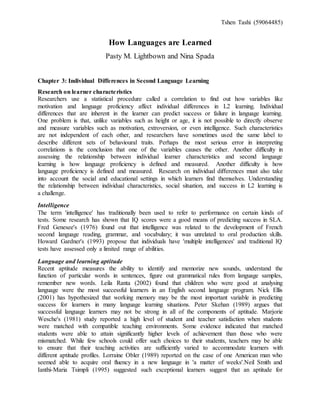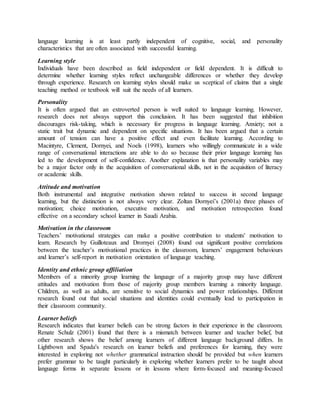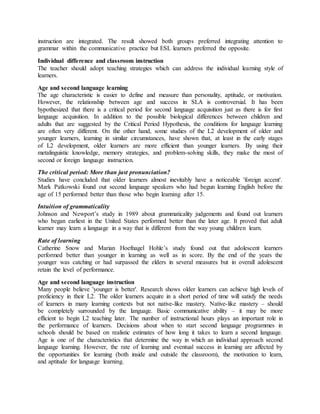- Research has found correlations between individual learner characteristics like motivation, intelligence, language aptitude, personality, attitudes, beliefs, and success in second language acquisition. However, these factors are complex and interrelated.
- Specifically, studies have shown intelligence and language aptitude are predictors of success, though aptitude involves multiple abilities. Personality may only impact oral skills, not literacy. Both instrumental and integrative motivation correlate with achievement.
- Age is easier to measure than other factors, but its relationship to success is controversial. Younger learners may acquire pronunciation more easily, but older learners can still achieve high proficiency with sufficient instructional time and immersion in the language.


